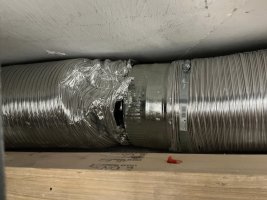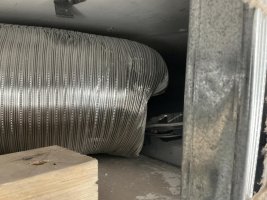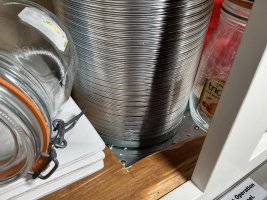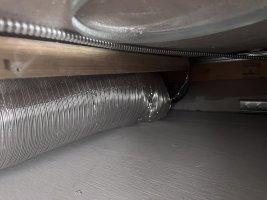jar546
CBO
Owner in a high-rise condo says the contractor installed a kitchen hood and covered it up before it was inspected. GC in charge of job says they did not install a range hood. The GC's contract says otherwise. GC says the owner hired someone else to do that, but the GC admits covering up the work. There was no mechanical inspection to determine if the duct was installed properly and connected to the high-rise stack. Owner and GC are arguing over money. We created a code case, and the owner had to hire another contractor to open up the soffit and wall so we could inspect it. This is what was found.










